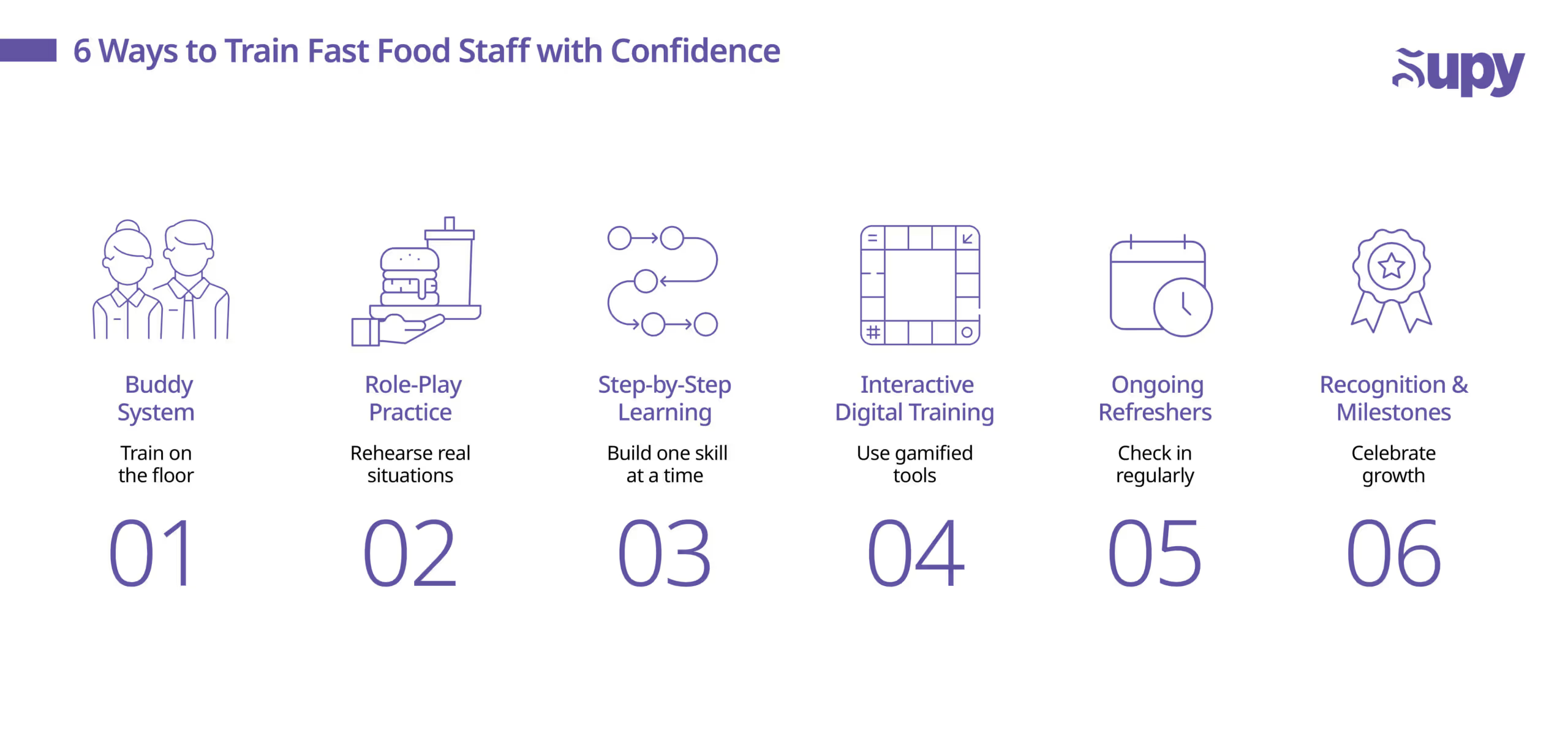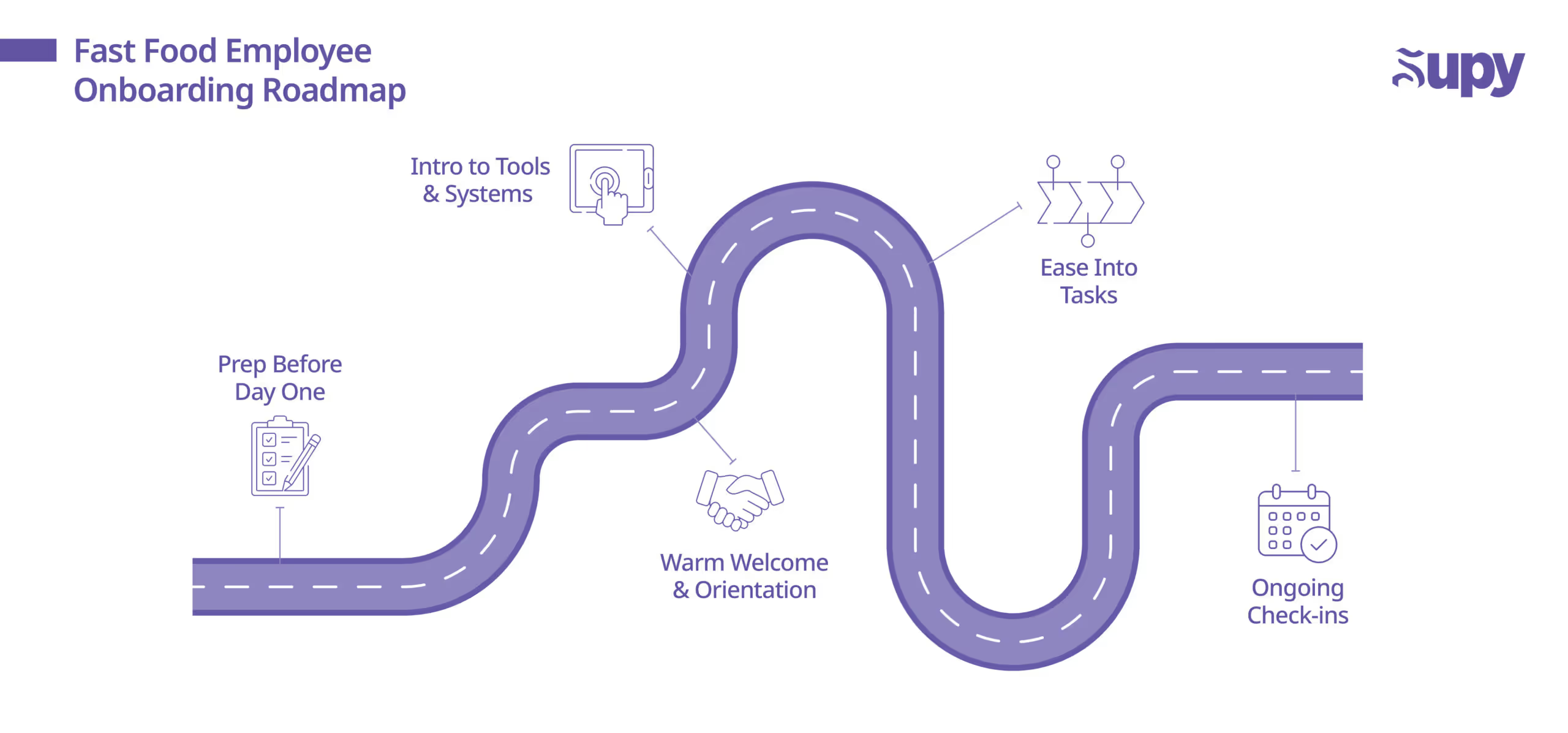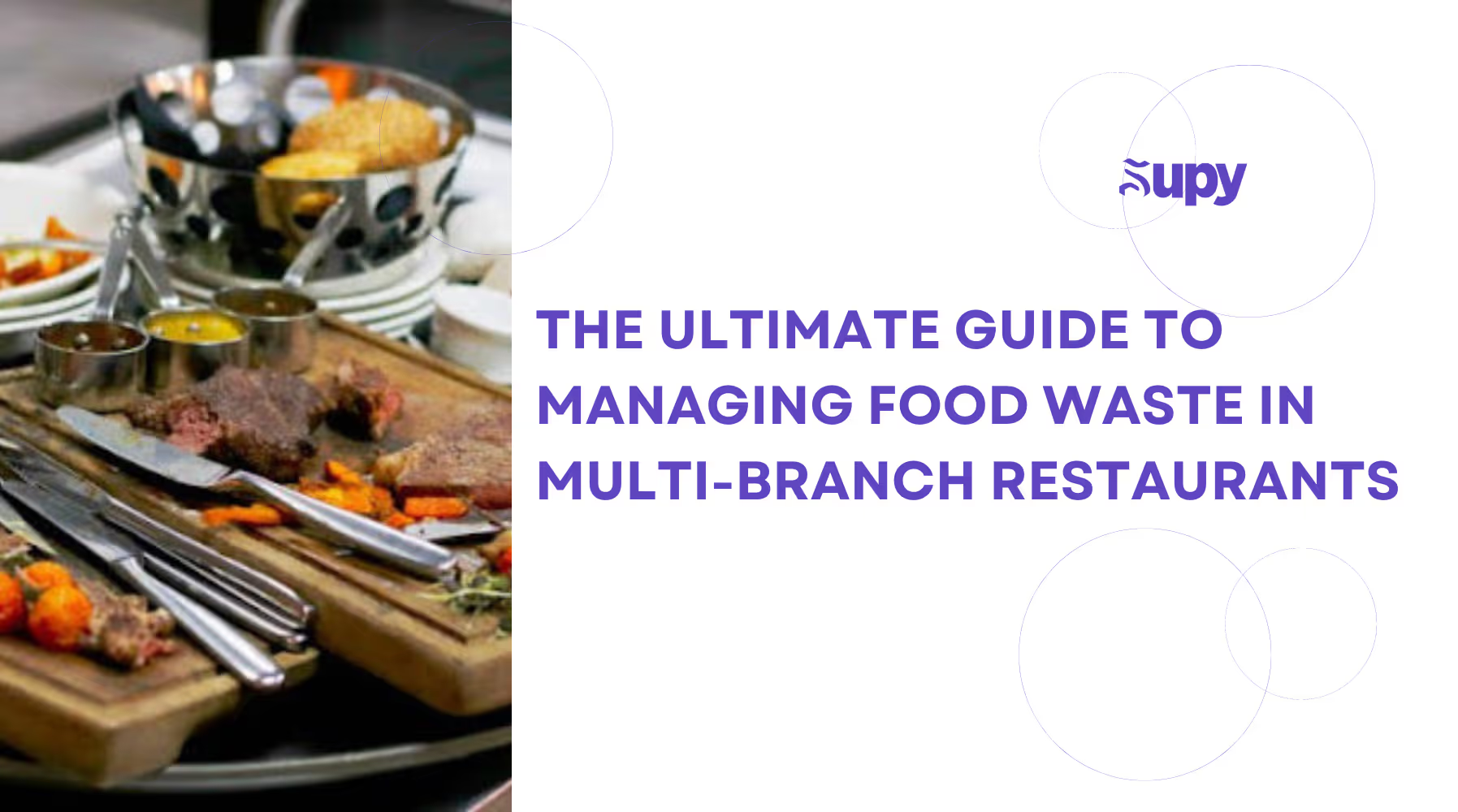Training Fast Food Employees: Best Practices for Consistency in Restaurants

The fast food industry moves quickly, but behind that speed is the need for a team that knows exactly what they are doing. With turnover rates climbing over 130% a year, many restaurants face a constant cycle of hiring and retaining just to keep things running smoothly.Training in fast food means building a system that helps employees handle the pace, meet brand standards, and deliver great service under pressure. When done right, training helps new hires ramp up quickly and gives experienced staff the tools to stay sharp and confident.It also has a direct impact on retention. Ninety-four percent of employees say they are more likely to stay with a company that invests in their development. The Hospitality Training 360 Report mentions a significant shift, with restaurants moving from quick wins in 2024 to long-term investments in core skills and career growth, making training a smart move for stronger teams and better operations.In this guide, we will break down practical ways to build a fast food employee training program that keeps your team consistent and your customers coming back.
- Key Challenges in Fast Food Employee Training
- Ways to Train Fast Food Teams for Consistency and Confidence
- Build an Employee Training Playbook Everyone Can Follow
- Fast Food Employee Onboarding Guide
- Best Practices for Training Restaurant Employees
- Conclusion
- About Supy
1. Key Challenges in Fast Food Employee Training
Training employees comes with its own set of challenges:
- High turnover and limited time: With high turnover rates, managers are often stuck in a constant loop of hiring and training. On top of that, ongoing training has dropped to just 1 hour per month on average, making it critical to make every training minute count.
- Inconsistent training methods: One shift manager might be thorough, while another rushes through the basics. Without a standard program, employees get mixed messages, leading to confusion and uneven performance.
- High-pressure, fast-paced environment: Training often happens on the floor during busy shifts. Without hands-on practice or preparation for rushes, new hires can easily fall back on shortcuts or bad habits.
- Young and diverse workforce: Many employees are young or in their first jobs, and learning styles vary. While some thrive with tech-based training, others need clear, step-by-step guidance. A one-size-fits-all approach rarely works.
- Keeping materials up to date: Menus, tools, and policies change often. Without a system to quickly update and share training content, teams risk falling out of sync and delivering inconsistent service.
2. Ways to Train Fast Food Teams for Consistency and Confidence

The most effective restaurant staff training programs combine hands-on practice, clear guidance, and ongoing support to build skills and confidence over time. Here’s how successful restaurants approach it:
- Buddy system and on-the-floor coaching: Pair new employees with experienced team members during their first shifts. This gives new hires real-time learning and immediate feedback, while also building a sense of teamwork from the start. It’s also a great opportunity for experienced staff to develop their leadership skills as they coach and guide others.
- Practice through role-play and scenarios: Let employees rehearse common situations, like handling difficult customers or managing a sudden rush. Practicing in a low-stakes environment helps them stay calm and consistent when it counts, and it helps restaurant managers identify where extra coaching is needed before a real challenge hits.
- Step-by-step skill building: Avoid overwhelming new hires with everything at once. Break training into small, focused modules. For example, start with the register, then food preparation, then drive-thru, so they can master each area with confidence. This approach helps motivate employees by giving them clear, achievable milestones to work toward.
- Use of digital tools and interactive learning: Many teams now use mobile apps, online training videos, or gamified quizzes to reinforce learning. This helps especially with younger workers who learn best through interactive content and short, engaging lessons.
- Ongoing check-ins and refreshers: Training should not stop after the first week. Schedule regular check-ins to review progress, give feedback, and offer refresher sessions, especially when new menu items or promotions roll out.
Celebrate progress and reward mastery: Recognize employees when they hit key milestones or improve in certain skills. This could be as simple as a shoutout in a team meeting or as structured as a “certified trainer” badge. Recognition keeps employees motivated and invested in their own development.
3. Build an Employee Training Playbook Everyone Can Follow
A clear, practical training playbook is the backbone of consistent fast food operations. It serves as a blueprint for how your team delivers on your brand promise every day, no matter who’s working or how busy it gets.InfographicHere’s what a high-impact restaurant employee training playbook should include:
Company Values and Culture
Help employees understand the why behind the job. Share your brand story, mission, and values to build a sense of belonging and purpose. Make sure they know what matters most, whether it’s exceptional customer service, high quality food, or a commitment to the local community. When employees connect to the bigger picture, they’re more motivated to represent the brand with pride.
Roles and Responsibilities
Lay out detailed job descriptions for every role, from cashier to cook to shift supervisor. Go beyond basic tasks and explain how each role contributes to the restaurant's success. When employees understand what they’re doing, and why it matters, they work with more purpose and pride.Here’s how to break it down:
- Cashiers: Focus on speed, order accuracy, upselling, and warm customer interactions. Cashiers are often the first and last point of contact, so excellent customer service training is essential. Train them to handle payments smoothly, make eye contact, and keep the line moving even during peak hours. Help them develop communication skills so they can explain promotions clearly, answer customer questions, and pass accurate details to the kitchen.
- Kitchen staff: Ensure precise preparation methods, portion control, and presentation. The kitchen team is responsible for turning out high quality food consistently, even when the pace picks up. Teach them to follow recipes and food safety protocols, monitor cook times, and communicate clearly with front-of-house staff when there are questions or delays.
- Shift leaders and supervisors: Oversee smooth service flow, coach team members, and resolve customer concerns. Shift leaders play a critical role in maintaining standards, supporting the crew, and setting the tone on busy shifts. Their communication skills are key, they need to delegate tasks, offer constructive feedback, and step in when issues arise, all while keeping morale high.
- Drive-thru attendants, delivery runners, and support roles: Train these seasoned employees to balance speed and friendliness, multitask effectively, and keep customers happy across different service channels. Their role often requires sharp listening and fast decision-making to handle multiple orders at once without errors.
Standard Operating Procedures (SOPs)
This is the heart of the playbook as this section turns expectations into action. SOPs provide detailed, step-by-step guides so every employee knows exactly how to do their job, regardless of experience level or shift.Key areas to cover:
- Food prep, cooking, and assembly: Include exact recipes, portion sizes, cooking times, and plating instructions. This is where menu training matters most as employees need to know not just what’s on the menu, but how to consistently prepare each item to meet brand standards. Reinforce why consistency matters: it’s not just about saving costs; it’s about delivering a predictable, high-quality guest experience every time.
- Register use, POS systems, and other tech tools: Provide clear guidance on how to operate point-of-sale systems, handle mobile orders, and navigate inventory management tools. These are essential technical skills that impact speed, accuracy, stock visibility, and the overall flow of service. Well-trained employees not only reduce wait times and improve customer satisfaction but also help keep the back of house running smoothly by ensuring inventory stays accurate and up to date.
- Equipment care, cleaning routines, and closing procedures: Outline when and how to clean equipment, sanitize stations, and shut down for the day. Explain why following these steps protects food safety, keeps operations running smoothly, and helps the next shift start strong.
Food Safety and Compliance
Train staff on everything from proper food handling to allergen protocols to routine sanitation tasks. This helps in protecting customers, employees, and your brand. Make sure they understand:
- Temperature controls: How to monitor and log temperatures for hot and cold foods to avoid the “danger zone” where bacteria thrive.
- Cross-contamination prevention: Safe storage of raw and cooked foods, proper use of color-coded cutting boards, and strict allergen handling procedures.
- Personal hygiene: When and how to wash hands, when to change gloves, and why surface sanitation matters, especially during peak rushes.
- Local food safety regulations: Help employees understand what health inspectors look for and why following the rules protects everyone.
Also, include emergency procedures:
- What to do if equipment breaks down
- How to handle spills or accidents safely
- Who to notify if a guest has a medical emergency (like an allergic reaction
Customer Service Standards
Define exceptional customer service so it’s clear what great looks like, and so employees know how to deliver it confidently, even under pressure. Cover essentials like:
- Warm greetings: Teach staff to smile, make eye contact, and welcome every guest, even when the line is long.
- Handling complaints: Show how to listen without getting defensive, apologize sincerely, and solve problems quickly. Provide example phrases so employees don’t feel stuck in tough moments.
- Managing high-stress situations: Train teams on staying calm and efficient during peak hours, focusing on clear communication and teamwork to keep service smooth.
- Upselling and suggestions: Teach subtle, helpful upselling, like offering a combo or highlighting a limited-time item, without sounding pushy.
https://www.youtube.com/watch?v=qaj7K61QZmM&pp=ygUOc3VweSB1cHNlbGxpbmc%3D
Performance Expectations and Feedback
Set clear benchmarks so employees know what success looks like and how they’ll be measured. Include:
- Operational metrics: Track order accuracy, drive-thru or counter times, and health and safety audit results. Make sure employees understand why these matter.
- Customer feedback: Use survey scores, online reviews, or secret shopper reports to celebrate wins and identify areas to improve.
Coaching and check-ins: Offer regular one-on-one feedback sessions. Praise what’s going well, offer tips for improvement, and set small, clear goals.
4. Fast Food Employee Onboarding Guide

A well-designed onboarding process is one of the smartest investments you can make in your fast food business. It helps new hires feel welcomed and confident while improving knowledge retention so they’re ready to contribute quickly. Onboarding goes beyond handing out training materials. It should be about building early engagement and setting the tone for success.Here’s an effective onboarding approach to follow:
- Prepare before day one: Have uniforms, schedules, logins, and training materials ready. A simple welcome message can also make a big difference in setting a positive tone.
- Provide a warm welcome and orientation: Introduce new hires to the team, walk them through the layout, and explain key policies. This gives them valuable context about how your restaurant management team runs the day-to-day.
- Introduce core tools and systems: Offer hands-on exposure to POS systems, inventory systems, kitchen equipment, or drive-thru tools, not as a full download but as an introduction.
- Ease into responsibilities: Start with simple tasks and gradually move to more complex duties. Pair them with a buddy for early training sessions to reduce stress and build teamwork.
- Check in early and often: Touch base regularly during the first few weeks to offer valuable insights, give feedback, and clear up any confusion.
5. Best Practices for Training Restaurant Employees
Here’s how you can take your training process from functional to exceptional while boosting consistency, engagement, and results across your team.
Create a Culture of Continuous Improvement
Even with a proper training manual in place, the best restaurants don’t treat training as a one-and-done event. Encourage employees to share ideas for improving workflows, menu prep, or service touches. This mindset keeps your ongoing training program dynamic and ensures the team adapts as the business evolves.
Use Peer-to-Peer Learning
Beyond formal hands-on training and shadowing, tap into the power of peer learning. Set up moments like pre-shift huddles or quick peer demos, where experienced employees share tips or show newer team members practical shortcuts. This builds a collaborative culture and helps best practices spread naturally across shifts.
Connect Training to the Restaurant’s Reputation
Make it clear that every employee’s actions, from the care they put into making an order to the tone they use at the counter, directly influence the restaurant's reputation. When employees understand that they’re not just doing tasks but shaping the brand, they are more motivated to uphold high standards.
Tailor Coaching to Individual Employee Performance
Track employee performance with simple tools like observation checklists or performance dashboards. Use that data to give targeted coaching, whether someone needs to improve speed, accuracy, or customer interaction. Personalized coaching helps employees feel supported, not singled out, and makes improvements stick.
Refresh Training Regularly to Keep It Engaging
Keep your ongoing training program lively with creative refreshers, like team competitions on new menu knowledge, tasting sessions, or quick guest service role-plays. Regular mini-trainings prevent knowledge fade, boost confidence, and help employees stay sharp, without needing to pull them into long formal sessions.
6. Conclusion
The fast food restaurant industry relies on consistent, well-prepared teams to deliver a positive dining experience at every touchpoint. Comprehensive training programs ensure employees practice essential skills, adapt quickly, and maintain high standards even in busy shifts. Clear training materials, ongoing coaching, and hands-on learning strengthen team confidence and help reduce turnover. Well-trained staff play a crucial role in upholding the brand’s reputation and setting the restaurant apart in a competitive market.
7. About Supy
Supy is changing the way restaurants manage their back-of-house operations, making inventory management simpler, faster, and more efficient. Its seamless interface is designed for employees to quickly learn the system, reducing training time and improving accuracy across locations. For fast food restaurants, this means teams can focus more on delivering an exceptional guest experience and less on chasing down inventory errors or stockouts.Looking to make inventory management easier for your team? Book a demo with Supy today!







